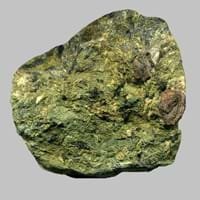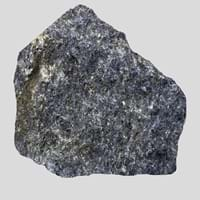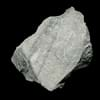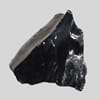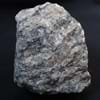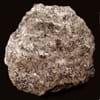Definition
Greenschist is a metamorphic rock that is formed under lowest temperatures and pressures and is usually produced by regional metamorphism
Blueschist is a metamorphic rock which is generally blue in color and is formed under conditions of high pressure and low temperature
Discoverer
Unknown
Edgar Bailey
Etymology
From minerals such as chlorite, serpentine, and epidote, and platy minerals such as muscovite and platy serpentine which are green in color
From French schiste, Greek skhistos i.e. split
Class
Metamorphic Rocks
Metamorphic Rocks
Sub-Class
Durable Rock, Medium Hardness Rock
Durable Rock, Medium Hardness Rock
Group
Not Applicable
Not Applicable
Other Categories
Coarse Grained Rock, Fine Grained Rock, Medium Grained Rock, Opaque Rock
Fine Grained Rock, Medium Grained Rock, Opaque Rock
Texture
Foliated, Platy
Foliated
Color
Dark Greenish - Grey, Green
Blue, Bluish - Grey, Purple, Shades of Blue
Durability
Durable
Durable
Appearance
Layered and Shiny
Dull and Banded
Interior Uses
Bathrooms, Countertops, Decorative Aggregates, Entryways, Homes, Interior Decoration
Floor Tiles, Flooring, Homes, Hotels, Kitchens
Exterior Uses
As Building Stone, As Facing Stone, Paving Stone, Garden Decoration, Office Buildings
Garden Decoration, Office Buildings
Other Architectural Uses
Curbing
Not Yet Used
Construction Industry
As Dimension Stone, Building houses or walls, Cement Manufacture, Cutting Tool, for Road Aggregate, Roadstone
As Dimension Stone, Cobblestones, Rail Track Ballast, Roadstone
Medical Industry
Not Yet Used
Not Yet Used
Antiquity Uses
Artifacts
Artifacts, Monuments, Sculpture
Commercial Uses
Blackboards, Manufacture of tools, Writing Slates
Cemetery Markers, Commemorative Tablets, Creating Artwork, Curling, Tombstones
Types
Not Available
Not Available
Features
Easily splits into thin plates, Smooth to touch
Has High structural resistance against erosion and climate, Very fine grained rock
Archaeological Significance
Monuments
Not Yet Used
Used
Famous Monuments
Not Applicable
Data Not Available
Sculpture
Not Yet Used
Used
Famous Sculptures
Not Applicable
Data Not Available
Figurines
Not Yet Used
Used
Formation
Greenschist is medium grade metamorphic rock, formed by the metamorphosis of mudstone or shale, or some types of igneous rock, when it is subjected to higher temperatures and pressures.
Blueschist forms due to the metamorphism of basalt and other rocks with similar composition at high pressures and low temperatures and approximately corresponding to a depth of 15 to 30 kilometers and 200 to 500 °C.
Mineral Content
Alusite, Amphibole, Biotite, Chlorite, Epidote, Feldspar, Garnet, Graphite, Hornblade, Kyanite, Micas, Muscovite or Illite, Porphyroblasts, Quartz, Serpentine, Sillimanite, Staurolite, Talc
Albite, Chlorite, Epidote, Garnet, Glaucophane, Lawsonite, Muscovite or Illite, Quartz
Compound Content
CaO, Carbon Dioxide, MgO
Aluminium Oxide, CaO, Iron(III) Oxide, FeO, Potassium Oxide, MgO, MnO, Sodium Oxide, Phosphorus Pentoxide, Silicon Dioxide, Titanium Dioxide
Types of Metamorphism
Not Applicable
Not Applicable
Types of Weathering
Biological Weathering, Chemical Weathering
Mechanical Weathering
Types of Erosion
Chemical Erosion, Coastal Erosion, Glacier Erosion, Sea Erosion
Chemical Erosion, Coastal Erosion, Water Erosion, Wind Erosion
Grain Size
Medium to Fine Coarse Grained
Fine to Medium Grained
Fracture
Conchoidal
Conchoidal
Streak
White
White to Grey
Porosity
Highly Porous
Highly Porous
Specific Gravity
2.5-2.9
3-3.2
Transparency
Opaque
Opaque
Density
2.8-2.9 g/cm3
2.8-2.9 g/cm3
Resistance
Impact Resistant, Pressure Resistant, Water Resistant
Impact Resistant, Pressure Resistant
Deposits in Eastern Continents
Asia
Afghanistan, Bangladesh, Bhutan, China, India, Japan, Kazakhstan, Malaysia, Pakistan, Russia, Thailand, Turkey, Vietnam
Japan, Turkey
Africa
Egypt, Ethiopia, Morocco, Nigeria, South Africa
Egypt, Ethiopia, South Africa
Europe
Austria, England, France, Georgia, Germany, Italy, Liechtenstein, Monaco, Norway, Slovenia, Spain, Sweden, Switzerland
France, Greece, Iceland
Others
Not Yet Found
Not Yet Found
Deposits in Western Continents
North America
Canada, Costa Rica, Cuba, Mexico, Panama, USA
USA
South America
Brazil, Colombia, Guyana
Not Yet Found
Deposits in Oceania Continent
Australia
New South Wales, New Zealand, Queensland
New Zealand
